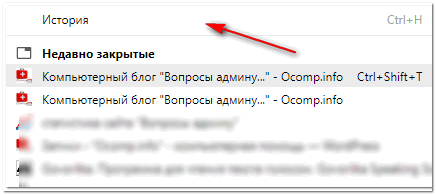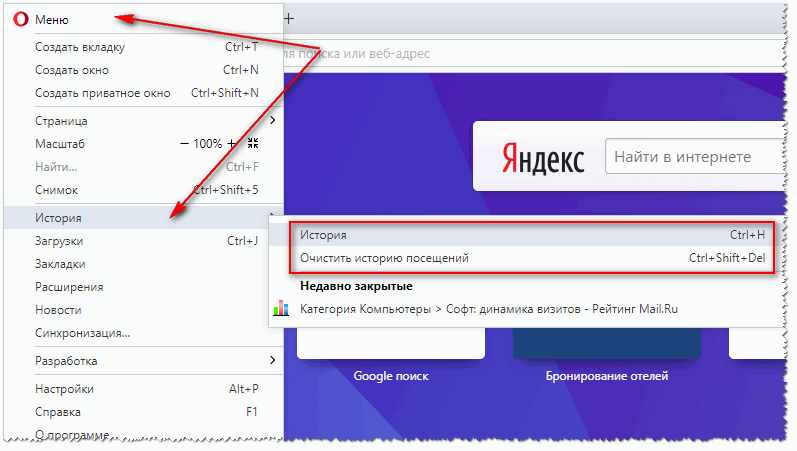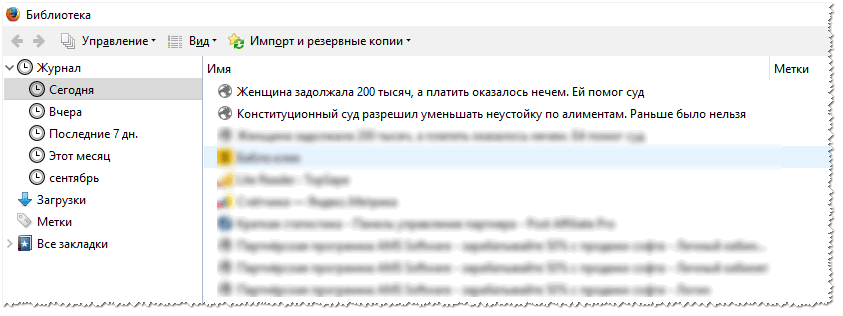And yet monopoly is a great power. If you have the most popular operating system on planet Earth in your hands. If only 19 countries in the world are richer than you. If over the years you dictate your own rules of the game, then you can afford to be imposing.
About the success story browser Microsoft Internet Explorer, do not forget that this browser itself is a rather average and not so powerful development as they want to present it to us today. But if you have the opportunity to integrate your program into Windows (the most popular operating system world), then it will in any case be used by millions. With such colossal opportunities, you will pull even the most mediocre solution into the lead.
And that's exactly what happened with Internet Explorer. The introduction is over. I invite you on a journey along IE history.
The Making of Internet Explorer, or How Bill Gates Slept Through the Internet
Even geniuses sometimes make mistakes. So, in fact, it happened with: in the early 90s, he was firmly convinced that the Network will remain the lot of the elite. Today it sounds wild and even ridiculous, but the train of thought of Gates can be understood: at that time it was not yet adapted to common user... Everything was too expensive, cumbersome and difficult to master. Guided by considerations of the weak potential of the Web, Microsoft focused on the minimum - the creation of an online service MSN, which, in the opinion of management, should have covered all the needs of a small number of users.
And 1995 broke out ... And they saw their sight. And they realized how wrong they were.
I teach, of course. Everything was not so pretentious, but the essence was conveyed correctly - it was in 1995 that Microsoft faced the need to urgently reconsider its strategy. MSN, which had a huge investment, was not up to its leadership role. Bill Gates understood that they urgently needed someone who could, at least, become popular and convenient. It was decided to start work on IE.
Internet Explorer's first victory
In the mid-90s, the Internet was dominated by Netscape browser... Internet Explorer developers were given specific task- as soon as possible to create a program that would win the palm from Netscape. The first release was based on the developments of the now defunct Mosaic browser. Naturally, some things have been improved, and some have been improved.
Finally, on August 16, 1995, the first version of Internet Explorer was released. By the way, it was not yet integrated into Windows and was offered for free download. Free Browser, immediately integrated into Windows "95, appeared a little later - in 1996. And this immediately began to bear fruit: the program had its first fans. By the way, since the second release (November 1996), the browser was available for both Windows and for Mac.
By 2001, six versions of the program were released, and each of the versions was significantly updated and modernized. We must pay tribute to Internet Explorer - for that time it was quite a solid browser: high speed downloads, completely free, constant updates.
It is no wonder that it was in the period from 1999 to 2003 that the Internet Explorer browser conquered a huge market share, finally defeating the completely irreplaceable Netscape Navigator in a fair fight. It is this period (until 2003) that is considered to be the "golden era" of IE: according to some sources, at that time, the program was used by up to 90% of Internet visitors. The figure is more than impressive.
Internet Explorer Sunset
In 2001, an event occurred that first propelled the popularity of Internet Explorer to the highest level, and then turned into its "gravedigger". It was in this year that the famous sixth came out Internet version Explorer, which has caused thousands of severe nervous breakdowns and attacks of hatred among webmasters around the world. This version completely ignored the generally accepted standards and applications specifically adopted by the W3C consortium.
G ovorya simple language sites can look great in all famous browsers, but they will frankly "float" in Microsoft Internet Explorer 6. Naturally, too many did not like this state of affairs. Numerous holes in the security of the program did not add optimism either.
What exactly happened? It's simple - the usual dizziness of success. Besides the fact that the sixth version itself was good enough (apart from the above mentioned problem and security issues), it was installed on Windows XP - a real masterpiece Microsoft, which has broken all records of popularity among users: an unthinkable thing, even today, more than 10 years later, millions of people use this OS.
It was just a fantastic situation: a very popular version of the browser is installed on an even more popular version of the OS. It would seem like a miracle comparable to winning the lottery.
You, Microsoft did not pull confrontation with the whole world and did not derive any benefit from this situation for itself. I don’t presume to judge what exactly became the root cause of such a strange position: is it pride, the desire to create an alternative (read, subsequently the main) direction in the development of browsers, or something else. What worked great with Windows did not work with IE browser: users did not want to accept the imposed rules of the game and started looking for other programs for surfing the Web.
Stuck behind the sixth version of the browser bad reputation both among web developers and among users. And the more XP grew in popularity, the more dissatisfaction the browser built into it caused. This is such a paradox in Internet history Explorer.
Internet Explorer today
Of course, Microsoft began to correct the situation in a hurry, but it was already too late. The churn of users began and continues to this day. Yes, there was the ninth version of Internet Explorer, where all sites were viewed quite correctly, and the security problems were more or less solved. But invaluable time has already been lost. Over the years, new programs (,) have grown and fledged, which happily picked up the flag that fell from the weakening hands of IE. The moment was lost.
To date, there are 11 full-fledged IE releases, and the latter is a very competitive product. Not without flaws, of course.
Yes, today the share of the Internet Explorer browser ranges from 25% in the US to 8% in Russia and some European countries. But what forces are given to the company! If earlier the influx of users was completely natural, today the retention of positions is possible only with the support of three pillars: huge money, massive PR and, of course, integration into the world's most popular Windows OS.
What was literally lying underfoot yesterday, today the creators of the browser have to get colossal efforts.
This is the story Microsoft browser Internet Explorer. A browser that could be to Internet visitors what Windows is to most computer users - everyone. But in the end, IE became just one of the.
We continue to look at using, customizing and clearing browsing history in popular modern browsers. In this article, we will talk about using the log in Internet Explorer... In other parts of the article, read about the browsing history in Google Chrome and Mozilla Firefox.
How to open and view history in Internet Explorer
Traditionally, the first question is how to open and view the log of visits.
As usual, there are several ways to do this.
1 way. You can open the history log using hotkeys: Ctrl + Shift + H .
Method 2 - through the menu. On the menu bar on the left upper corner push .
Method 3. In the browser command line, click Service - Browser Panels - History .

Note... If you do not see the menu bar and command line, then you should right-click at the top of the browser and check the boxes Menu bar and Command line .
1 way. On the menu bar in the upper left corner, click View - Browser Panels - History .

Method 2. In the browser command line, click Tools - Explorer Panels - Journal .

Method 3. On the favorites bar, click Favorites, then go to the tab Magazine .

Note. If you do not see the menu bar, command line or favorites bar, then you should right-click at the top of the browser and select Menu bar , Command line or Favorites bar .
Or open the magazine using the combination hotkeys: Ctrl + Shift + H .
Any of the above methods will open the next window on the left side of the browser.

Searching and sorting history in Internet Explorer
By default, browsing history is sorted by date (more precisely, by periods of visits: day, week, month). To view which sites have been visited today, click on today, respectively, and open the list. To view the visited pages, click on the desired site.


The history of visits can be sorted not only by date, but also by site (by site in Internet Explorer 8), by attendance and by visit order.

To go to search by browsing history choose Search log (Log search in Internet Explorer 8). Here, in the search field, you can enter either the elements of the site address or the name (both in Russian and in English).

Delete browsing history (history) in Internet Explorer, full and partial
Note 2... As usual, I remind you that if you use private mode (InPrivat in Internet Explorer), then clear history then there will be no need.
How to restore the last session
You can also restore the last session in the Internet Explorer browser in several ways.
1. Opening new tab and press Reopen the last session . To open one of the recently closed tabs, press Reopen closed tabs and select the one you need from the list.

2. On the menu bar, click .

3. On the command line, click Service - Reopen the last browsing session .

That's all there is to it work with the visit log (history) in the Internet Explorer browser... Good luck!
If you've recently visited a site and want to return to it again, but can't remember its address, check your browsing history to find it. The history of visited pages is also called "Browser history" or "History of visited pages". To open it, click on the button Favorites and select the tab Magazine to open the corresponding panel.
Click the black down arrow and choose a method for sorting links to visited sites.
- Browse by date... Sorting by date of site visit.
- Browse by node... Sort in alphabetical order by site names.
- View by attendance... The most frequently visited sites are displayed first, the less frequently visited - at the bottom of the list.
- View in order of visit... The sites you visited last appear first in the list.
- Today... Sort by the order in which you visited the sites today.

You can also click the arrow to the right of the address bar to display links to the sites you have visited.
Select an item in the journal combo box Log search to display a search box that you can use to search for visited sites.
Clearing Internet Explorer Browsing History
If necessary, the log entries can be deleted in whole or in part. To partially delete entries, open the visit log as described above, right-click on desired entry and select the item context menu"Delete". Thus, you can delete by entry one by one or for all for any selected day.
For complete cleaning history, open the IE browser settings menu by left-clicking on the gear icon in the upper right, and select the "Security" menu item, where by clicking on the "Delete browser history" submenu item, open the "Delete browsing history" window and click the button in it Delete... All visit history will be erased.

Greetings, friends, I am glad that you visited my humble blog. I'm sure many are interested in how to view history in internet explorer... Some, of course, switched to Opera, Google Chrome, and there are users who use this wonderful browser.
Like many others, it has many of its own special functions so this article will be extremely helpful to you.
Well, let's start with the fact that given browser is definitely one of the most popular. Of course, in the distant 2006-2008 the situation was much better, now a lot of people have switched to Chrome or Yandex browser.
Now, there are people who use internet explorer, therefore, you will need to write an article about it, what do you say? First, let's download and install it if you haven't already.
We enter the corresponding request and already on the first page, we see the following links.

We need to click on the "Download" button and we will proceed to download. By the way, after you install this program(browser), you will be asked to restart your computer. Do not worry, calmly restart your computer, after which you will have access to all the functions of the browser.
It is very simple, everything here will be intuitively clear even for beginners. If we need to go to a site, then we simply enter a couple of letters and we are given sites with a similar name.

How to view history in internet explorer
Everything is done relatively easily, for a start, in the upper right corner we find three small tabs.

We need a middle one that looks like an asterisk. Click on it.


We click on it and we are asked to choose when to look at the log of visits. We choose, for example, today, and voila, everything is there. By the way, if you are not comfortable looking in the right corner this story, then it can be moved to the left. It is done, it is very simple (quite possibly you would have guessed it yourself), click on this button (see the picture).

If you want to remove a site from history, then just click on it right button, then select the "Delete" item, isn't it easy ?!

I usually look at history by date of visit, but there are variations here, such as "view by visit order". In general, as you please, so look, I hope you this information will be helpful.
I almost forgot to tell you that this story can be opened not through the menu, but using special keys: Ctrl + Shift + H. I just tried it, everything works, so use this browser on your health, if you still have questions, then ask them in the article, I will be glad to help you.
Now you know how you can watch the history in the Internet Explorer and I'm sincerely happy for you. Honestly, I wrote you everything that I knew myself, so if you even forgot, then do not be offended, but ask a question in the comments to this article and I will answer you. That's all, thanks for your time.
Sincerely, Yuri Vatsenko!
.
User question
Hello.
Can you please tell me if the sites I visited are saved somewhere on the computer? The fact is that I read one interesting article, but I can't remember on which site ...
Good day!
The entire history of the pages viewed (and by date and time) is saved in the browser history. There is such a magazine in any normal browser... In this article I will show you how to open this magazine and see when and which pages were viewed in it. I will also touch on several options for viewing the history of visits, if the journal has already been cleared.
Option number 1
Press a simple combination of buttons Ctrl + H - a window with history should automatically open (note: H - History).
Option number 2
Just copy the address: chrome: // history / and paste it into address bar browser. Simple and easy!
Option number 3
In the upper right corner of the browser window, you need to click the icon with "three dots" - in the list that opens, select the tab "History"(see screenshot below).

Advice! By the way, to open last tab(which was closed) - press the key combination Ctrl + Shift + T.

Further, it will open before you full list of all visits: by date, time (see example below). You can also search for a page by its name ( Top Menu). In general, you can quickly find the sites that you visited.

Opera
Option number 1
Press the buttons at the same time Ctrl + H(same as in Chrome).
Option number 2
Click in the upper left corner of the "Menu" and select the "History" tab. Then you will have the opportunity to:
- open a journal (history of visits);
- clear the history of visits (by the way, you can also hold down the Ctrl + Shift + Del buttons for this);
- or view a few last viewed pages (example below).

By the way, the magazine itself, in my opinion, is even more comfortable than in Chrome. Here you can also search in history by a specific page name, on the side there is a convenient rubricator by date: today / yesterday / old.

Option number 1
To open the visit log window, you must press the combination of buttons Ctrl + Shift + H .
Option number 2
You can also call the journal by accessing the menu: in the upper right corner you need to click on the icon with "three lines" - in the sub-window that opens, select "Magazine"(see screenshot below).

By the way, in Firefox magazine visits (see screen below), in my opinion, is almost perfect: you can watch today's history, yesterday's, for the last 7 days, for this month, etc. backup, or export / import records. In general, everything you need is at hand!

Edge
Option number 1
Press a combination of buttons on the keyboard Ctrl + H- in the upper right window of the program, a small sidebar with a magazine (example in the screenshot below).
Option number 2
Click on the menu "Centre"(located in the upper right corner of the program), then switch the tab from favorites to the magazine (see number-2 in the screenshot below). Actually, here you can find out all necessary information(by the way, you can also clear your browsing history here).

If the story has been deleted, can you find it out?
Not always and not completely ... It also matters how this story was cleared, and when. If, for example, specials were used. utilities for complete destruction history - then there is practically no chance. What if easy cleaning by using normal function the browser itself (and even recently) - then the chances are much greater. I will give several working methods below ...
Using the DNS cache
If, after clearing the history in the browser, you did not restart the computer / laptop, then you can find the domains to which the transitions were made in DNS cache... These, of course, are not specific page addresses, but still you can find out about something ...
Another disadvantage of this method: that, in addition to user connections, it will display the service addresses used by your system, antivirus applications etc.
And so how to view history using DNS.

Several ways to open command line v different windows -
Using data recovery software
Browser browsing history is stored in regular files on your hard drive (like any other files). And when you delete them, you can also try to recover them using data recovery programs (of which there are hundreds now).
The topic of recovery is quite extensive, so I recommend that you read the article, the link to which is below. In it, I showed how to find and recover Word / Excel documents (the principle of operation will be similar).
How to recover not saved Word document(or Excel)- (see the subheading "Search deleted document on your hard drive ")
Where to find files to recover:
Google chrome:
C: \ Users \ (Username) \ AppData \ Local \ Google \ Chrome \ User Data \ Default \ local storage
Mozilla Firefox:
C: \ Users \ (Username) \ AppData \ Roaming \ Mozilla \ Firefox \ Profiles \
Microsoft Edge:
C: \ Users \ (Username) \ AppData \ Local \ Microsoft \ Windows \ History
Install a program for monitoring user actions
If you want to know which addresses and sites the user will visit in the future, then in this case, you can install a special. a program for monitoring the actions and work of the PC. She will show not only addresses, but everything running programs, operating time, time to turn on / off the PC (can also take screenshots of the desktop), etc. In general, you can find out everything that is done at the computer!
I talked about how to set it up and what to choose in one of my articles, the link below.
How to keep track of employees' working time: find out what they do on a PC -
Control programs: Office metric, JETLOGGER, Kickidler, Time Doctor, CleverControl, Stakhanovets, CrocoTime.
Note: I want to remind everyone that using this software to monitor employees on computers or other devices for which you do not have sufficient access rights (and powers) is considered a violation of Russian federal and state laws!
Recover the system using checkpoint
If you have a checkpoint for system recovery, then it can also help restore history (they are created automatically by default in Windows XP, 7, 8 - in Windows 10 their automatic creation disabled).
I have a separate article on my blog dedicated to this topic. From it you will learn how to see what recovery points are in the system, and how to roll back to the desired one (link below).
How to repair Windows 10: step by step guide -
Cons: not always there control points with the desired date. Not all history is restored (Internet Explorer has a chance ☺).
That's all for me.






